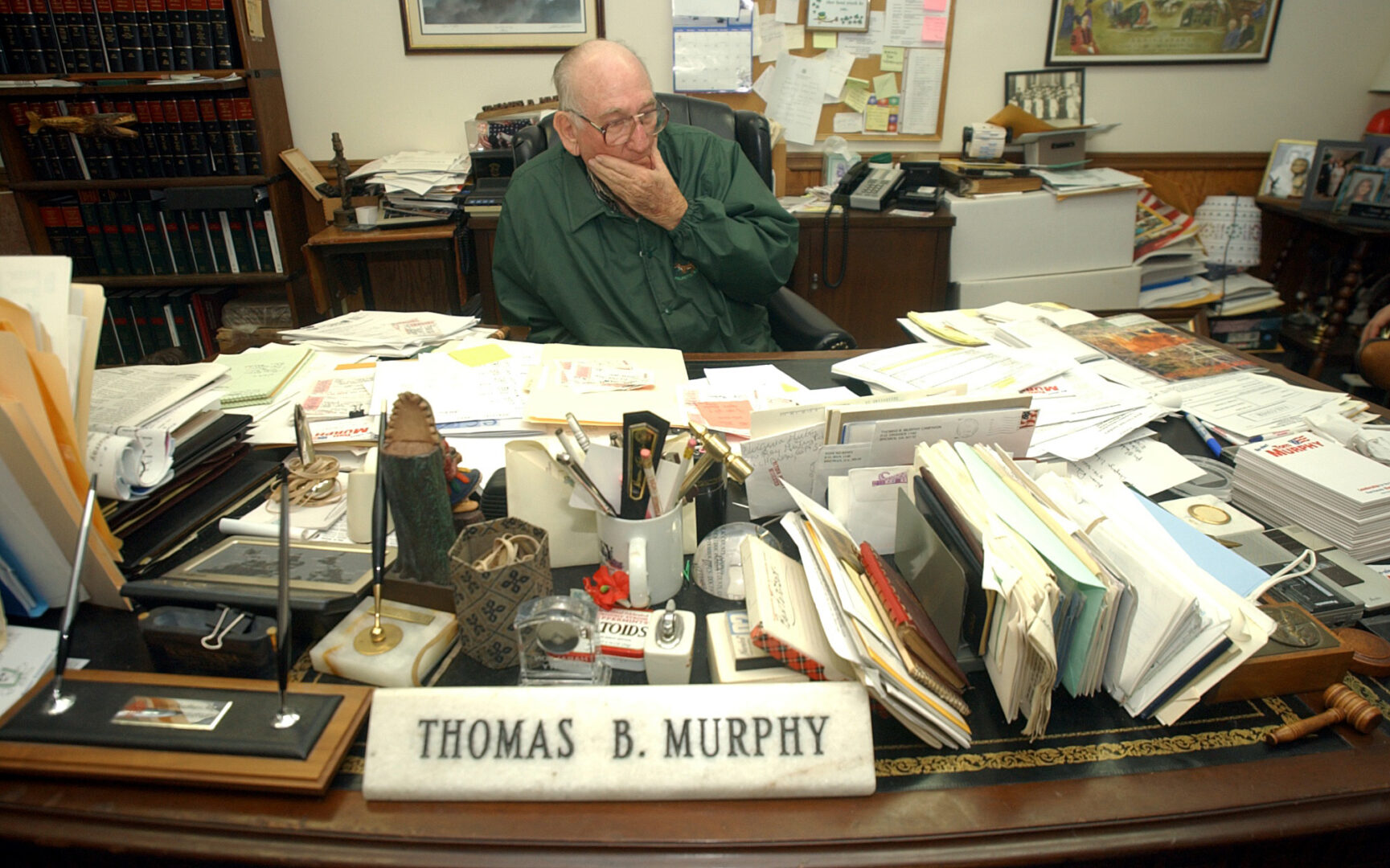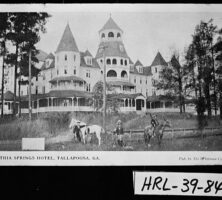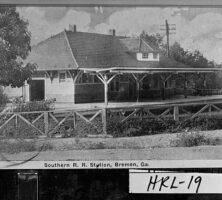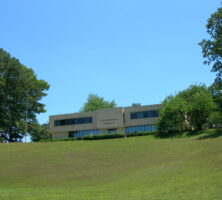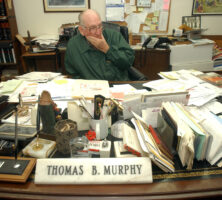Haralson County, the state’s 113th county, is located in west central Georgia, on the border with Alabama, and covers 282 square miles. Created in 1856 from parts of Carroll and Polk counties, it was named after Hugh A. Haralson, a U.S. congressman and state legislator.
The Dahlonega gold vein, which runs through the region, attracted the first non-Indians to the area during the Georgia gold rush. Many of these people settled permanently, displacing the Cherokee and Creek Indians, who had held the land before white settlement.
The county seat, Buchanan, was incorporated in 1857. Prior to that year the town’s name was Pierceville, but another Georgia town already held the name, so it was renamed after U.S. president James Buchanan, who had recently taken office. There is no solid information about the town’s original courthouse, but one built in 1891 is still extant and today houses the Buchanan-Haralson Public Library and the Haralson County Historical Society. The building was placed on the National Register of Historic Places in 1974. The current courthouse was built in 1972.
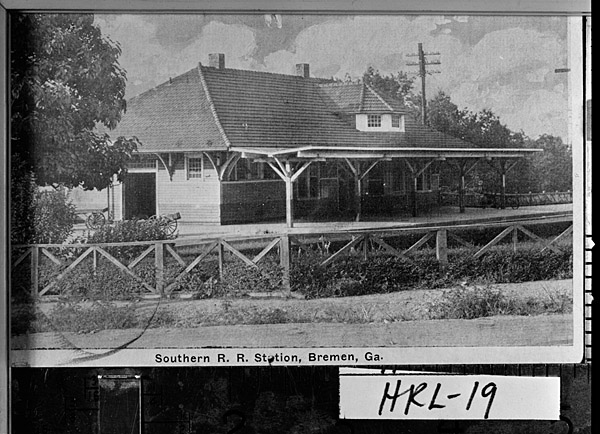
Other incorporated communities in the county are Bremen, incorporated in 1883; Tallapoosa, incorporated in 1860; and Waco, incorporated in 1885.
Bremen, known between the 1940s and 1990s as the “Clothing Center of the South” for its then thriving clothing manufacturing industry, took its name from the local railroad station and the German seaport town of the same name. Bremen’s location at the intersection of the Chattanooga, Rome, and Columbus Railroad and the Georgia Pacific Railway appealed to manufacturing industries.
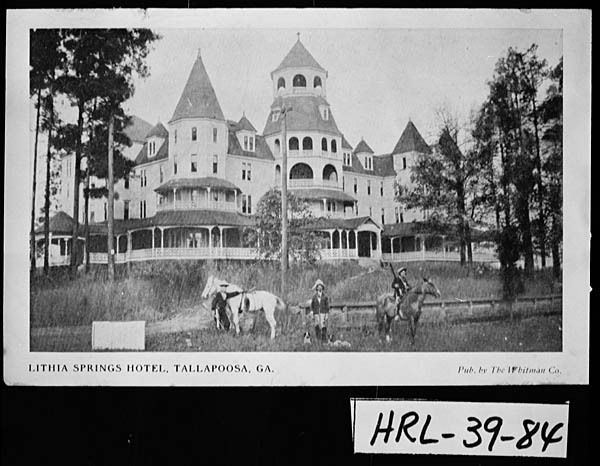
Tallapoosa (said to mean “golden water” in the language of the Creek Indians) had been called “Possum Snout” by gold miners who panned the waters of the Tallapoosa River for the precious metal. Waco, known first as “Dean” and then as “Wacoville,” was once a center for the shipment of cotton and lumber. In 2002 it became home to the ninety-acre Thomas B. Murphy campus of West Central Technical College (later West Georgia Technical College).
Although at first Haralson County’s economy revolved around gold mining, after the mines were depleted inhabitants made their living by farming, chiefly cotton, and harvesting the stands of lumber prevalent in the area. Some residents, notably those in Tallapoosa, took advantage of the area’s magnificent natural beauty, a mineral springs, and the arrival of the railroad in the 1880s to encourage the tourist trade by developing hotels and resorts. One of the numerous northern visitors to the county was Ralph L. Spencer, a Connecticut land speculator and entrepreneur who established the Tallapoosa Land Mining and Manufacturing Company in 1887. Spencer organized Tallapoosa’s first municipal electric light company, water works company, and athletic association. He also was a prime investor in a glassware factory in town.
When mining waned, Spencer embarked on what may have been his most interesting endeavor—the establishment of a planned community for the purpose of wine making. He invited some of Pennsylvania’s Hungarian immigrants to leave their mining jobs and relocate to 2,000 acres near Tallapoosa, where they could produce wine. Led by their priest, Father Francis Janishek, 200 families accepted Spencer’s invitation. They planted vineyards and established wineries in the community they named “Budapest.” Their success with viticulture attracted other groups from around the country, many of whom established their own vineyards and wineries. Most notable among these were about 200 families of Slovakian origin who established a community called Nitra three miles north of Tallapoosa. The county’s population became quite diverse as immigrants from other European regions joined the first groups. Just as the county’s vintners began to flourish, however, Georgia passed the Prohibition Act of 1907, effectively ruining the industry and causing many of those in the new communities to leave the county.
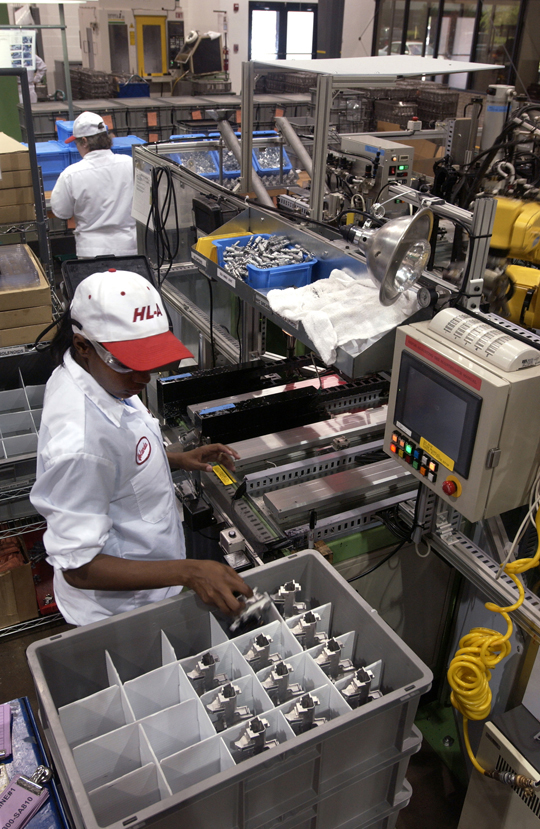
Notable residents of Haralson include Tom Murphy, longtime speaker of the Georgia House of Representatives, and major league baseball player Whitlow Wyatt, who retired to a 700-acre cotton plantation near Buchanan.
Among places of interest are Helton Howland Park; the Homeplace, an 1800s house museum; Veteran’s Memorial and Medal of Honor Park; and the West Georgia Museum of Tallapoosa.
According to the 2020 U.S. census, the population of Haralson County is 29,919, a slight increase from the 2010 population of 28,780.






